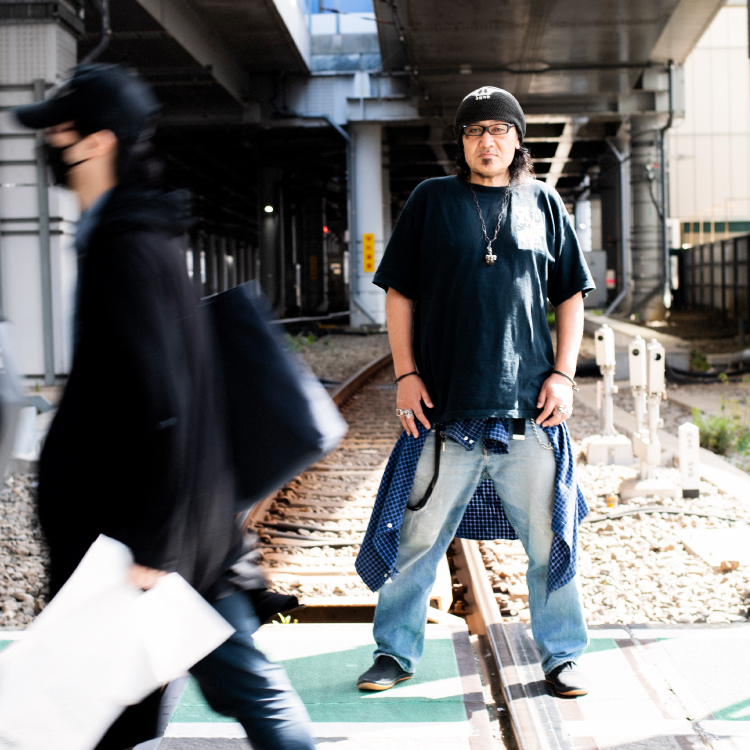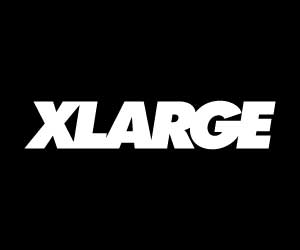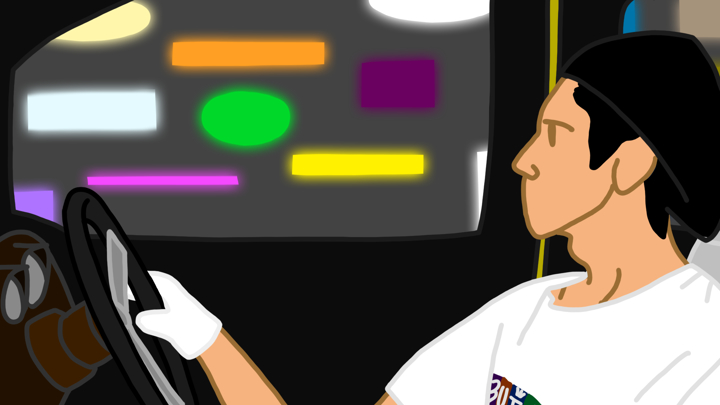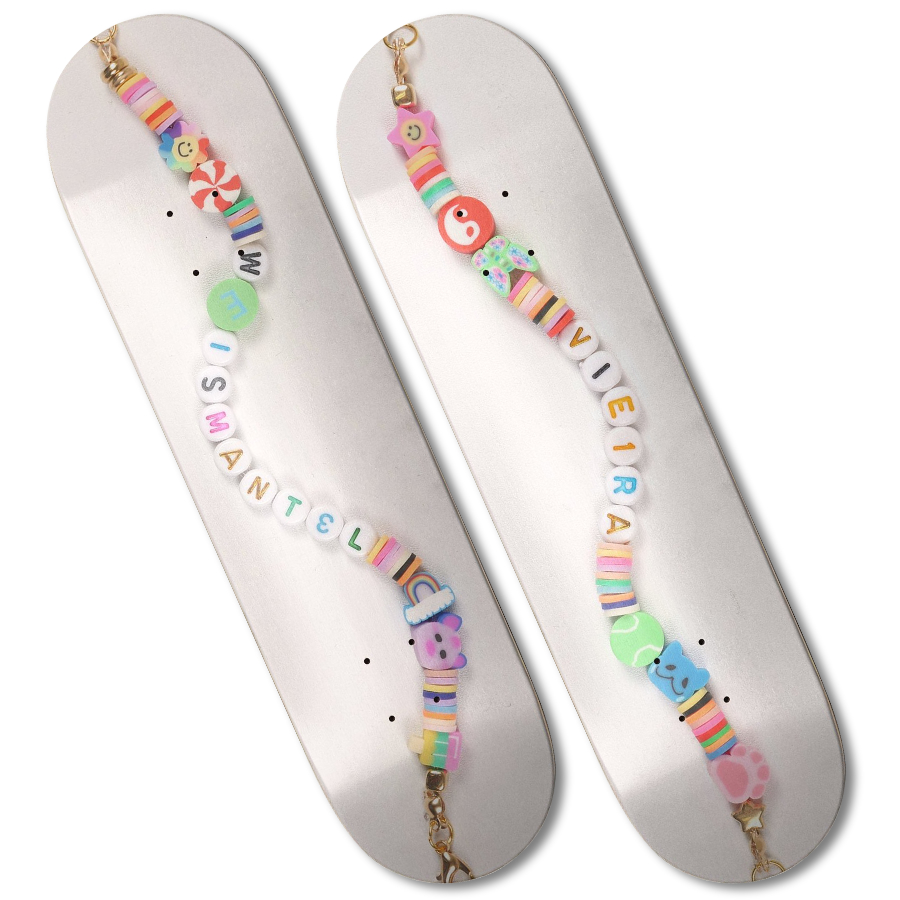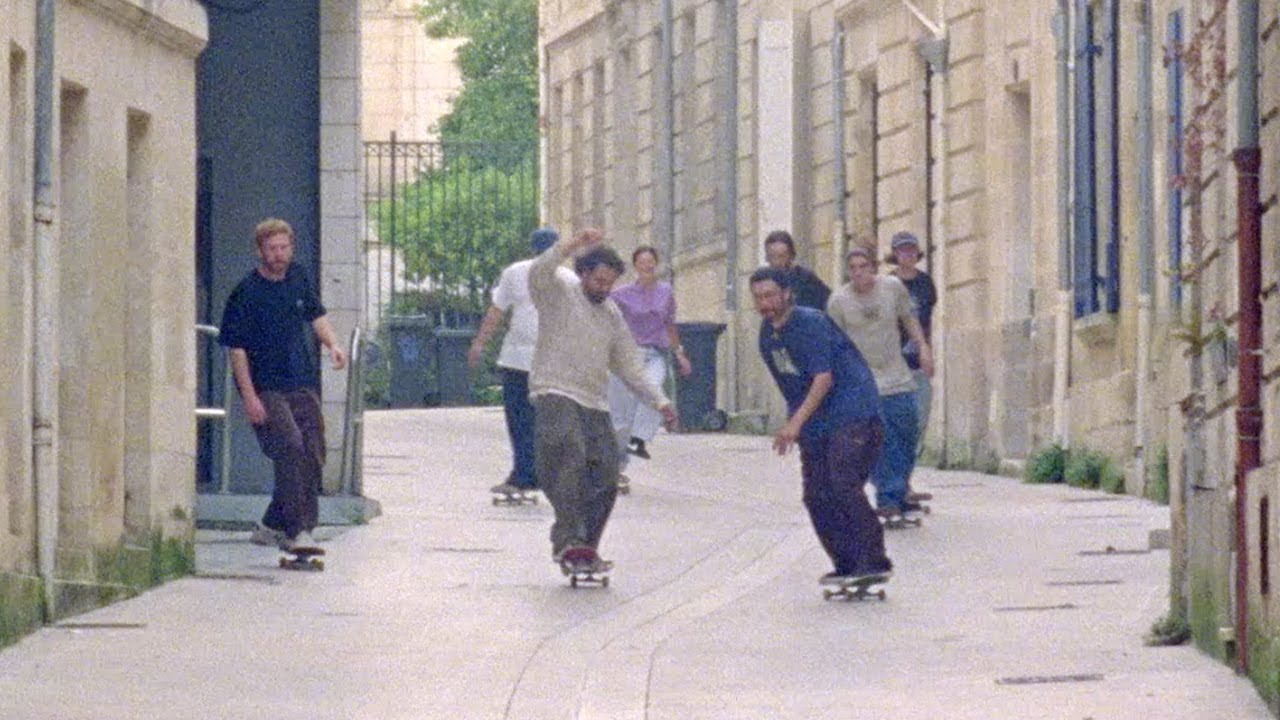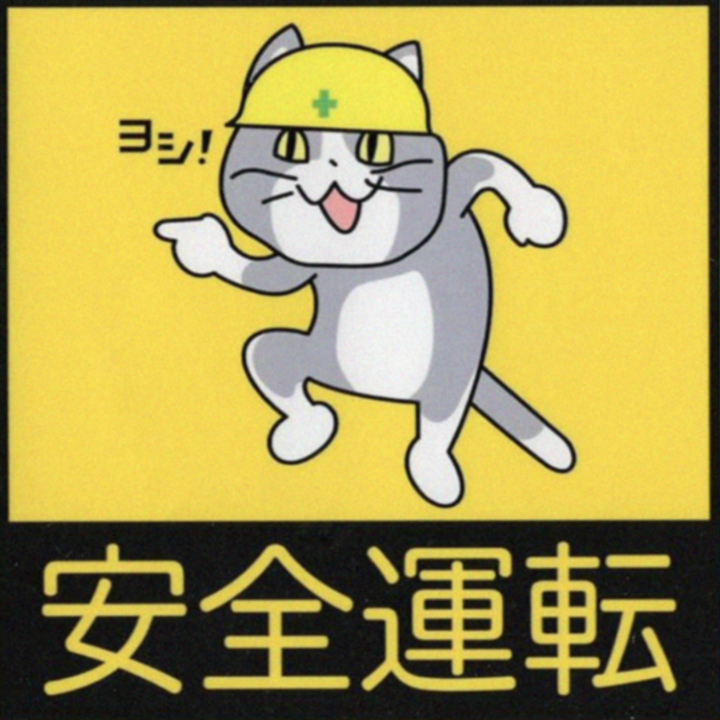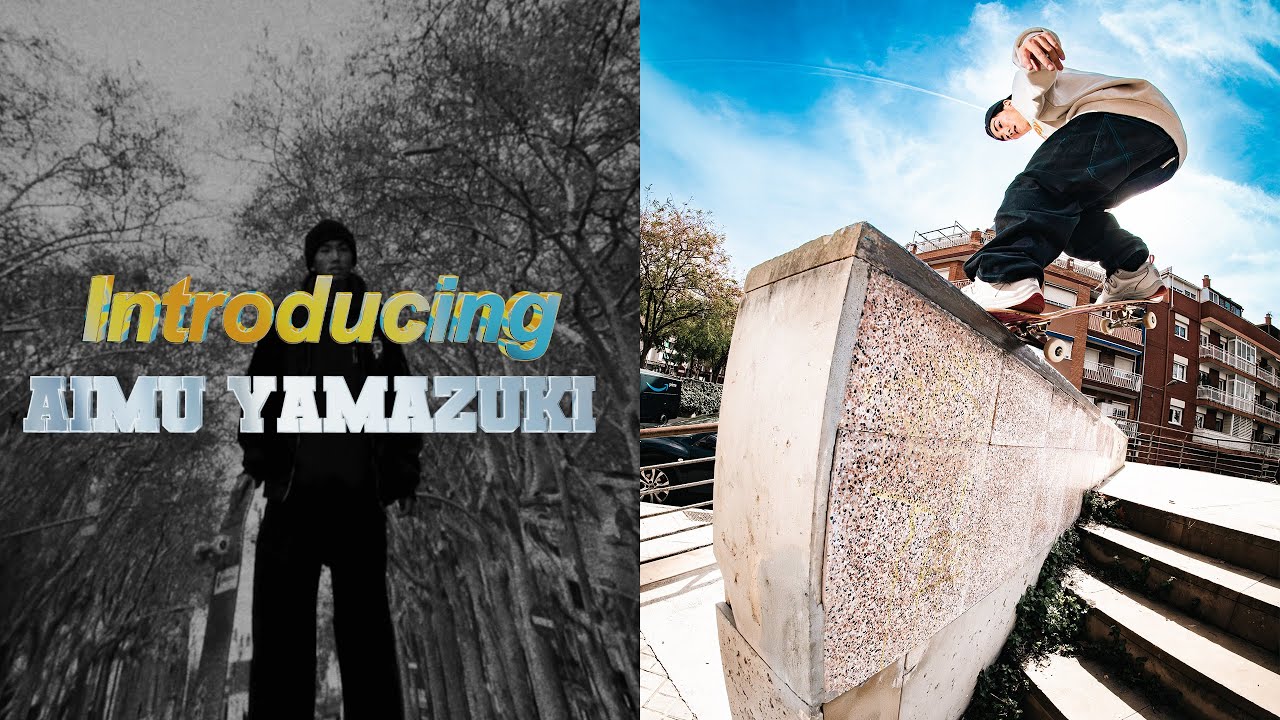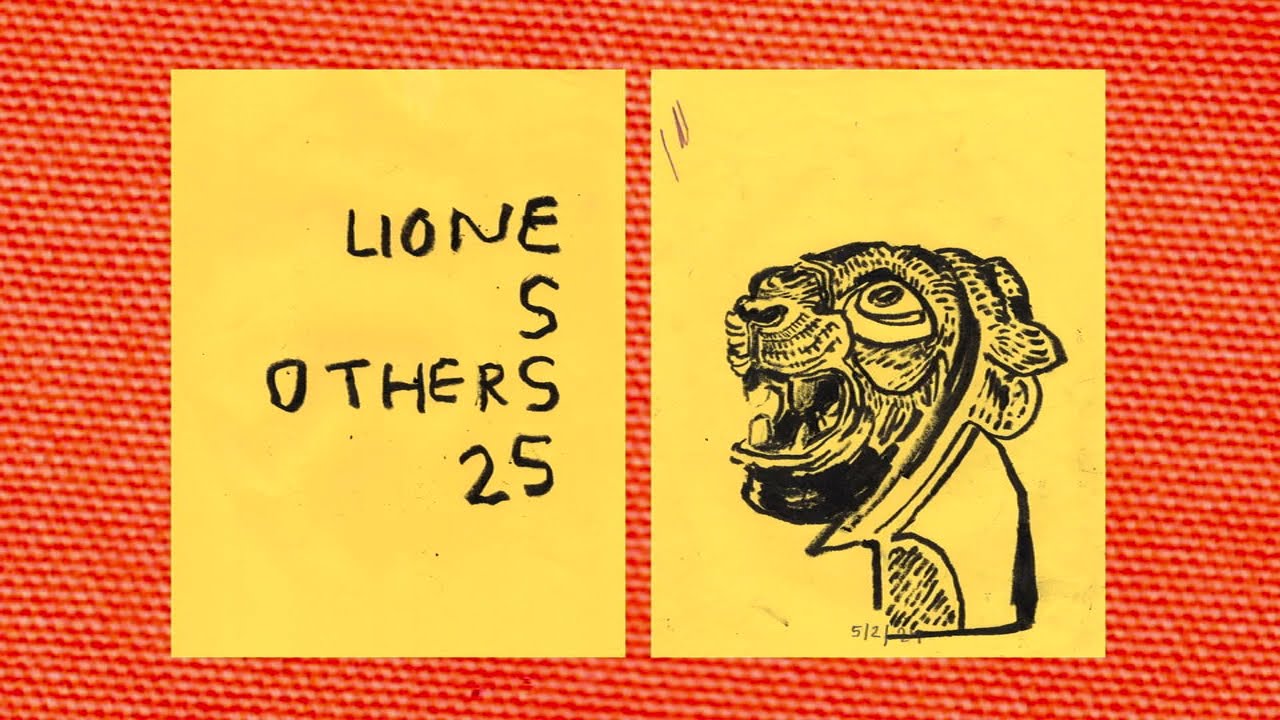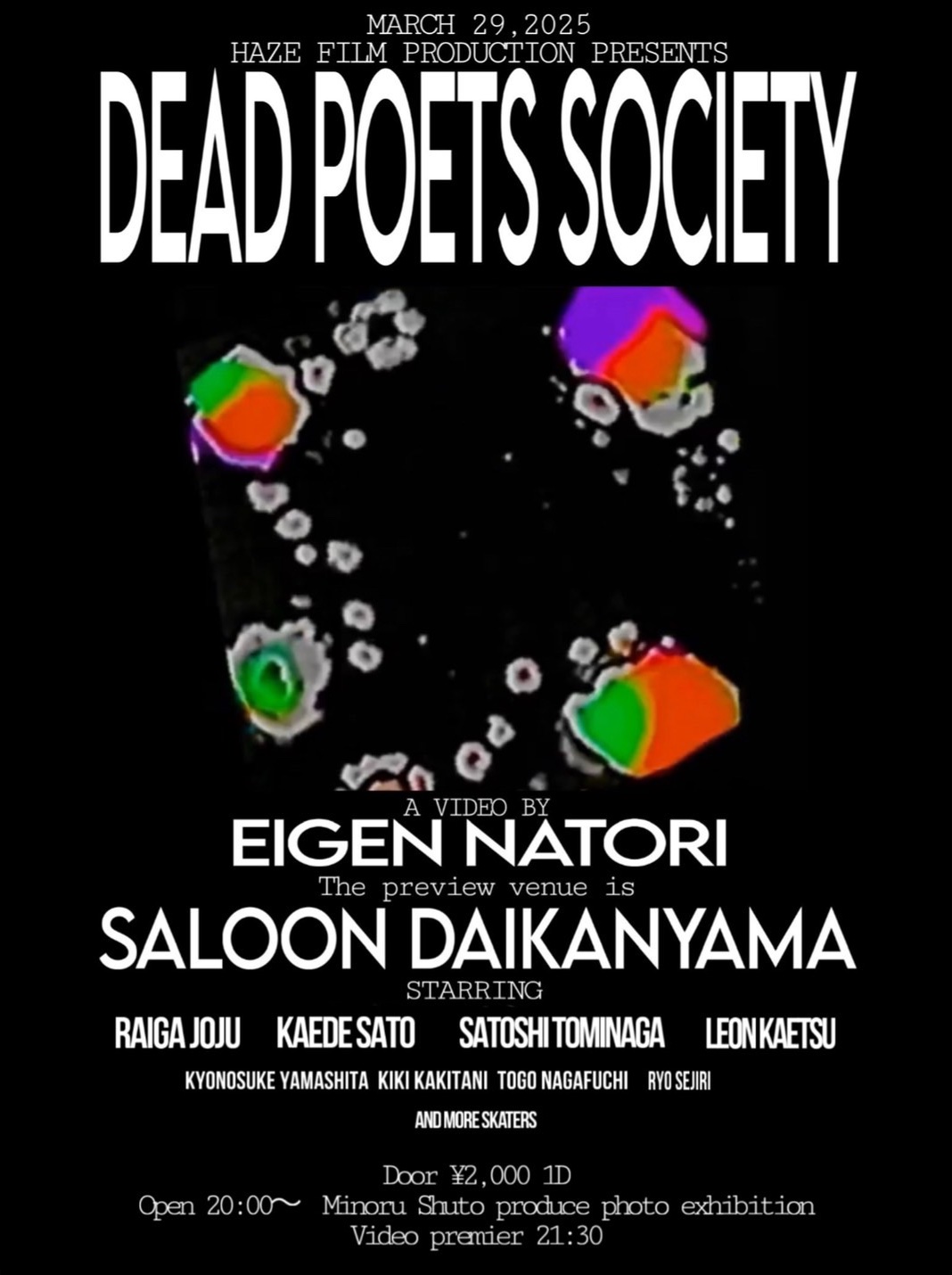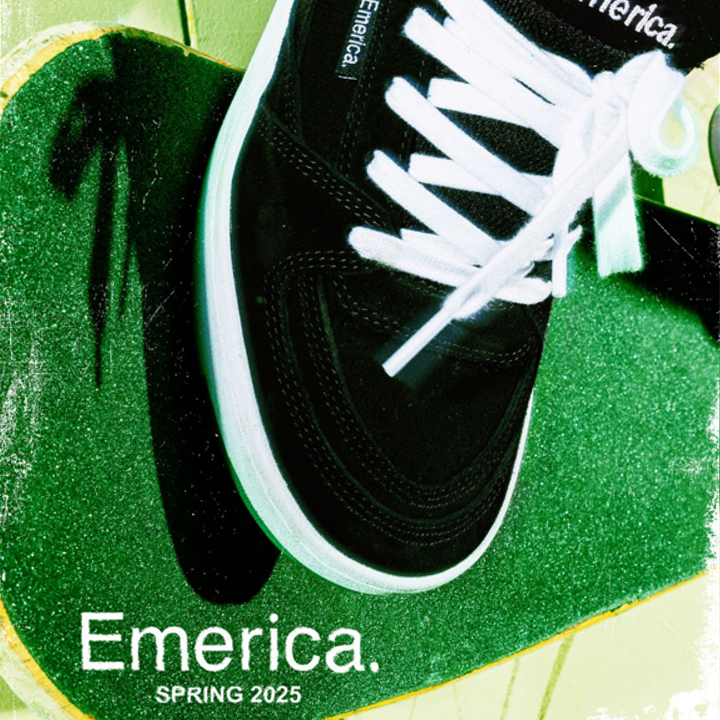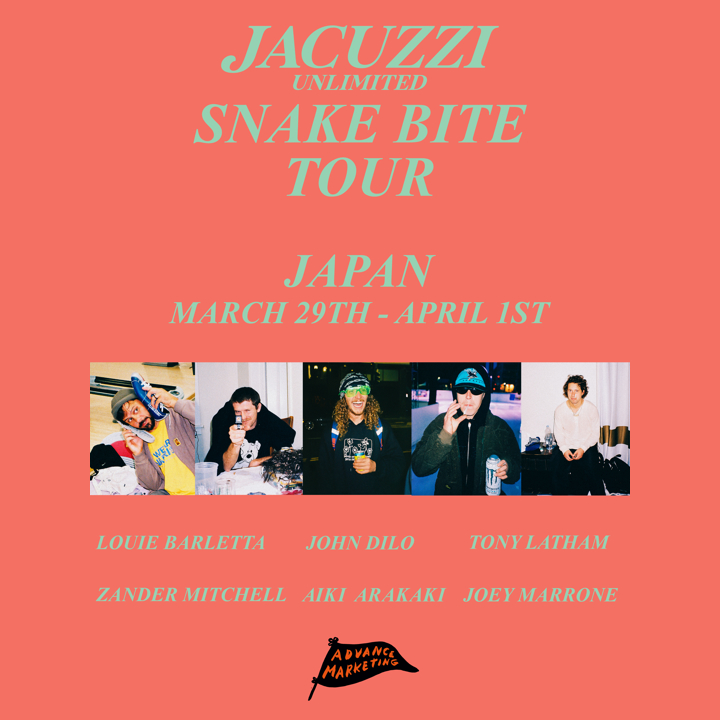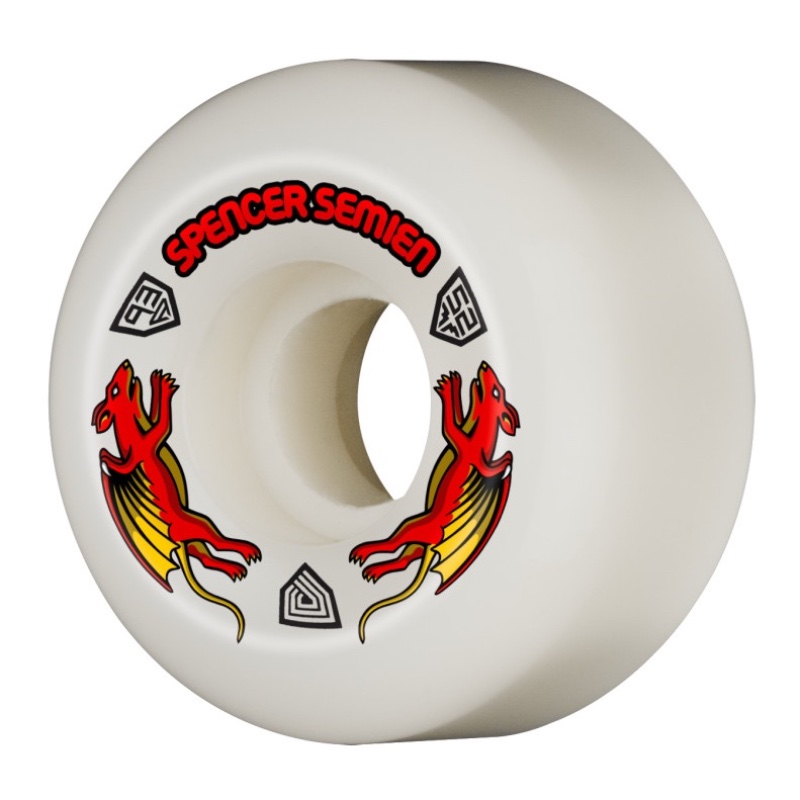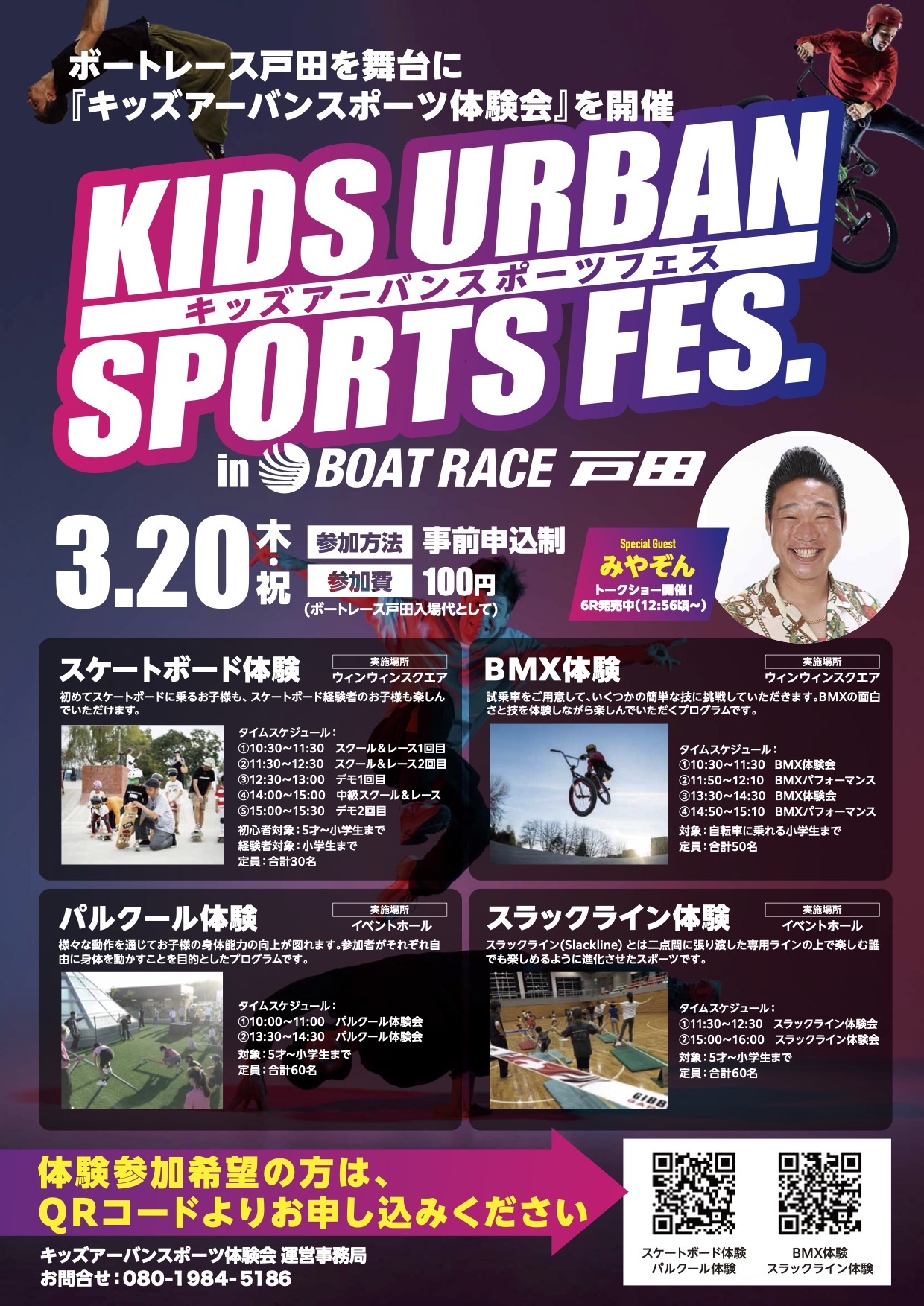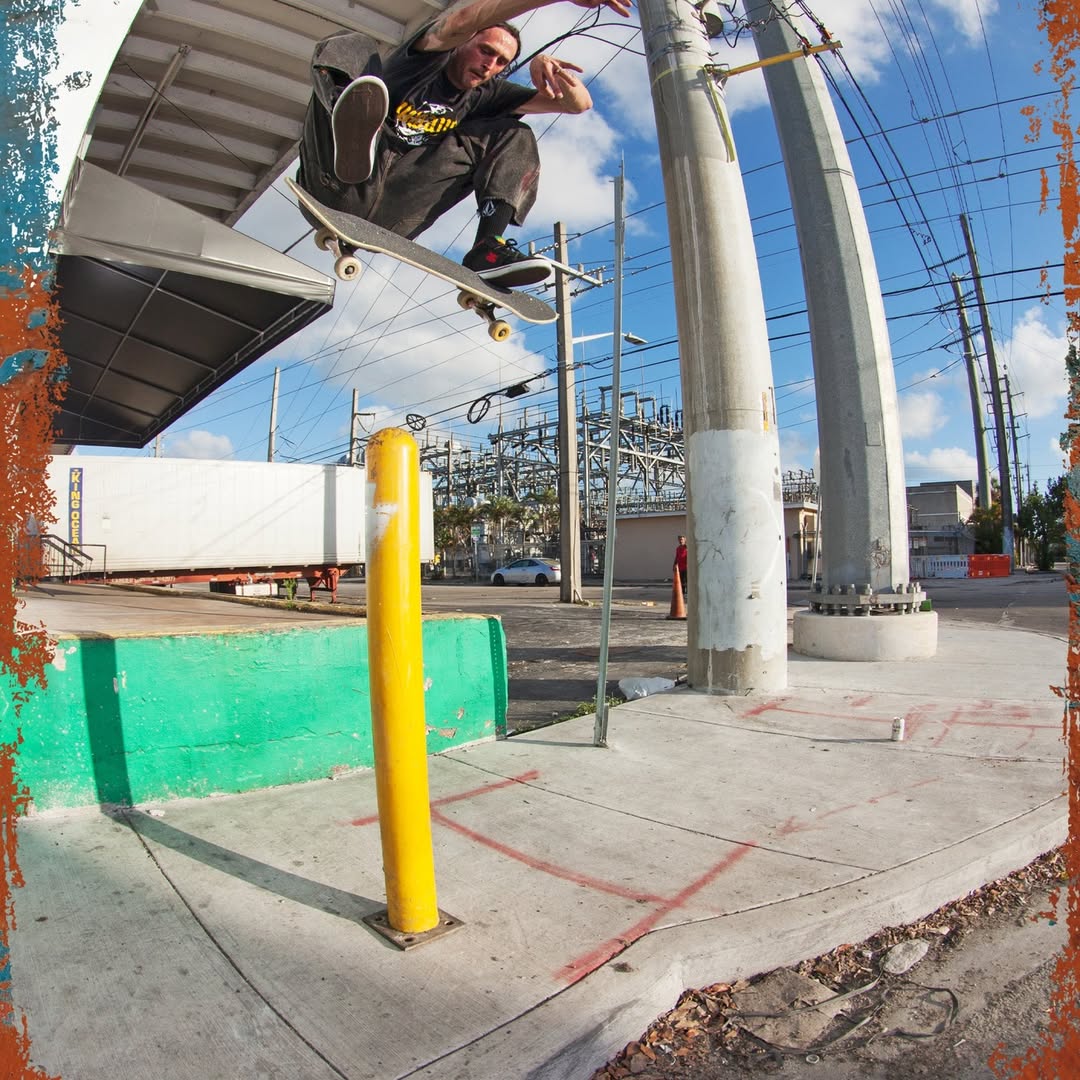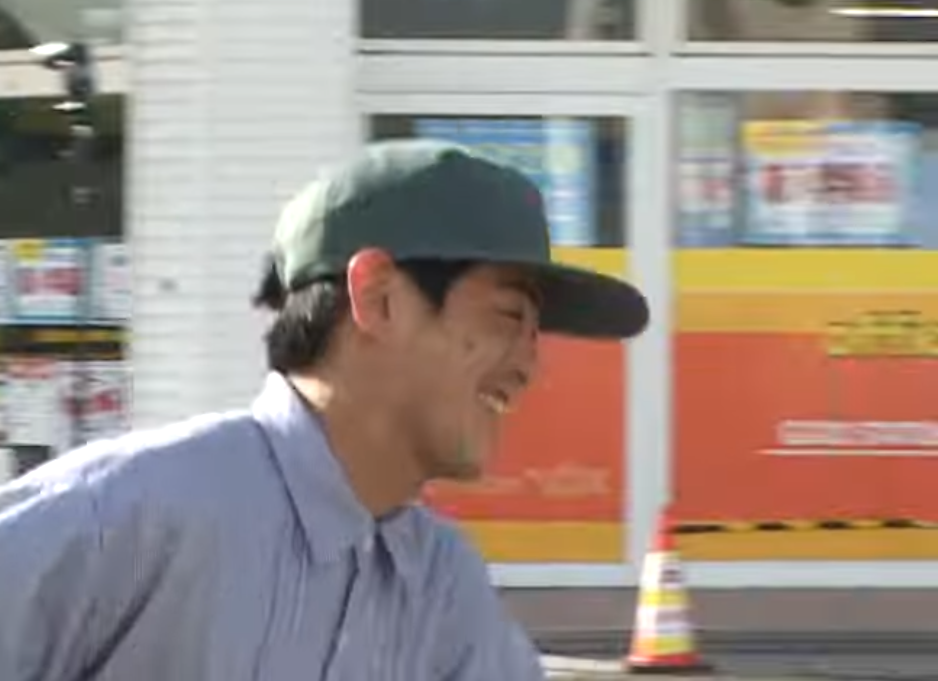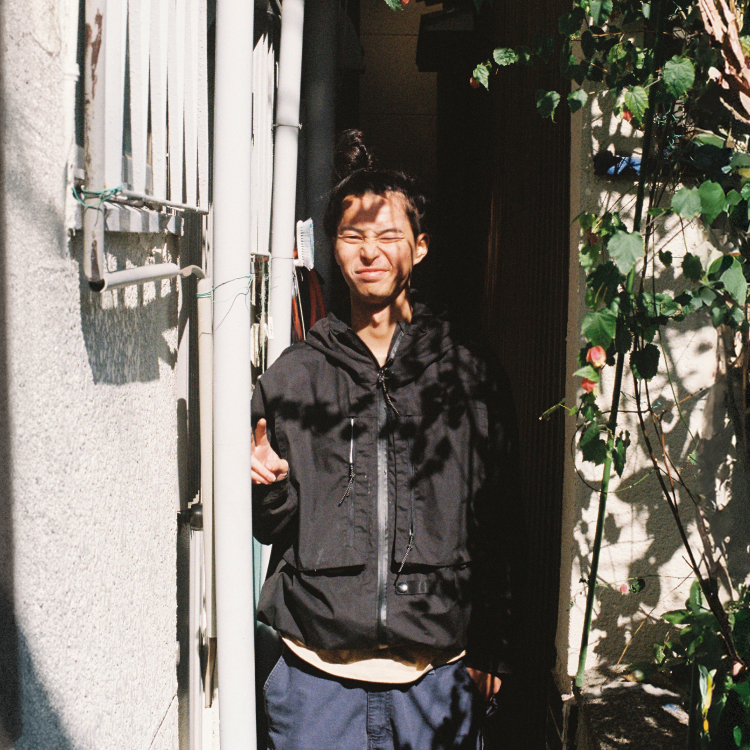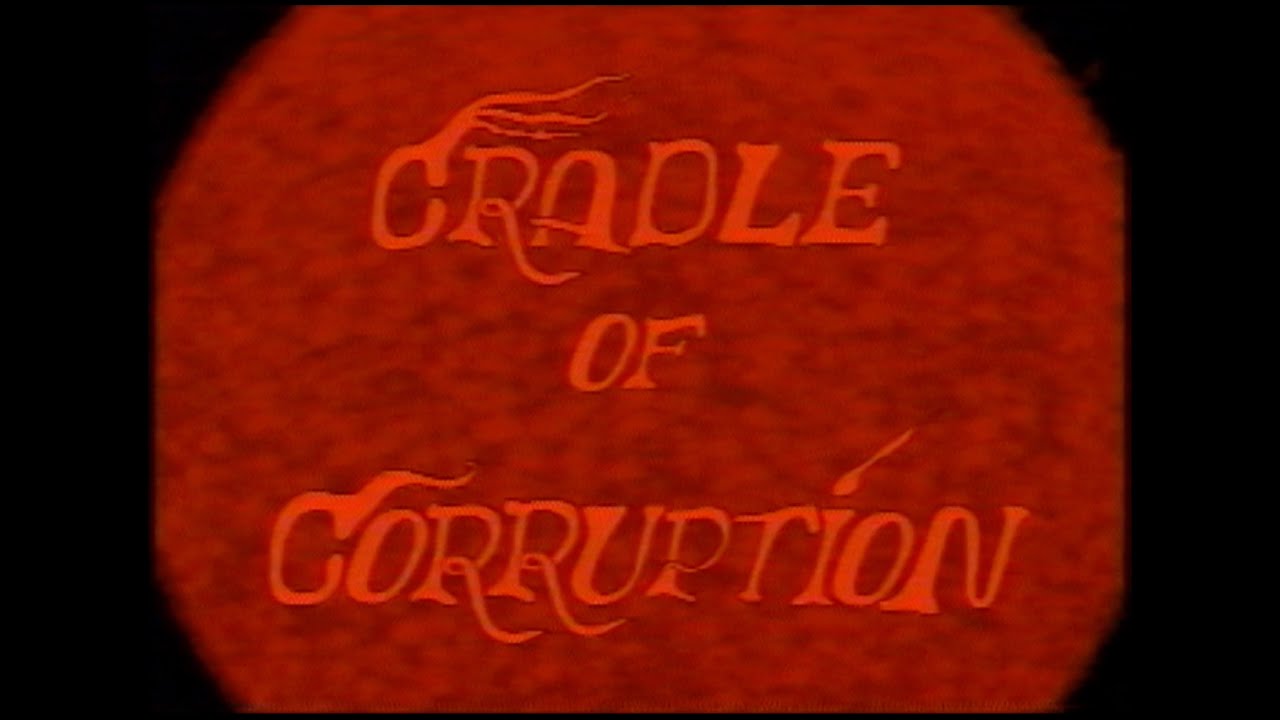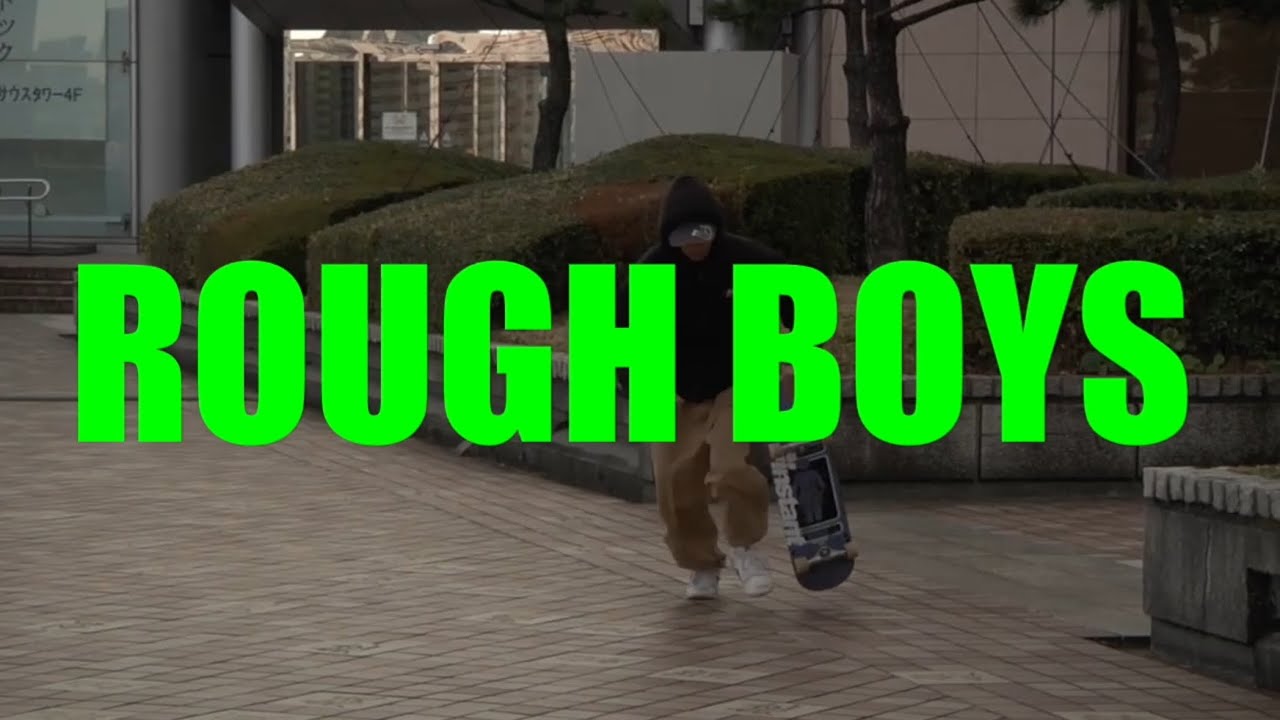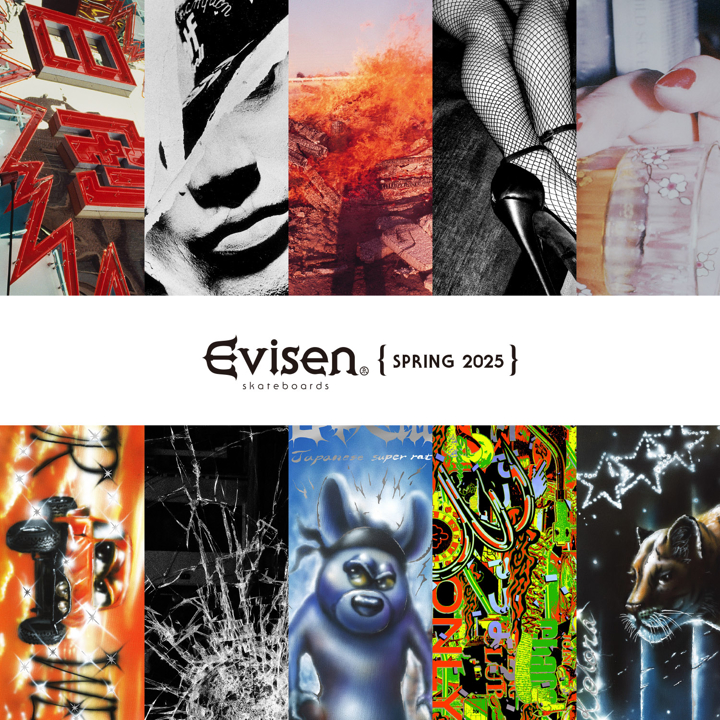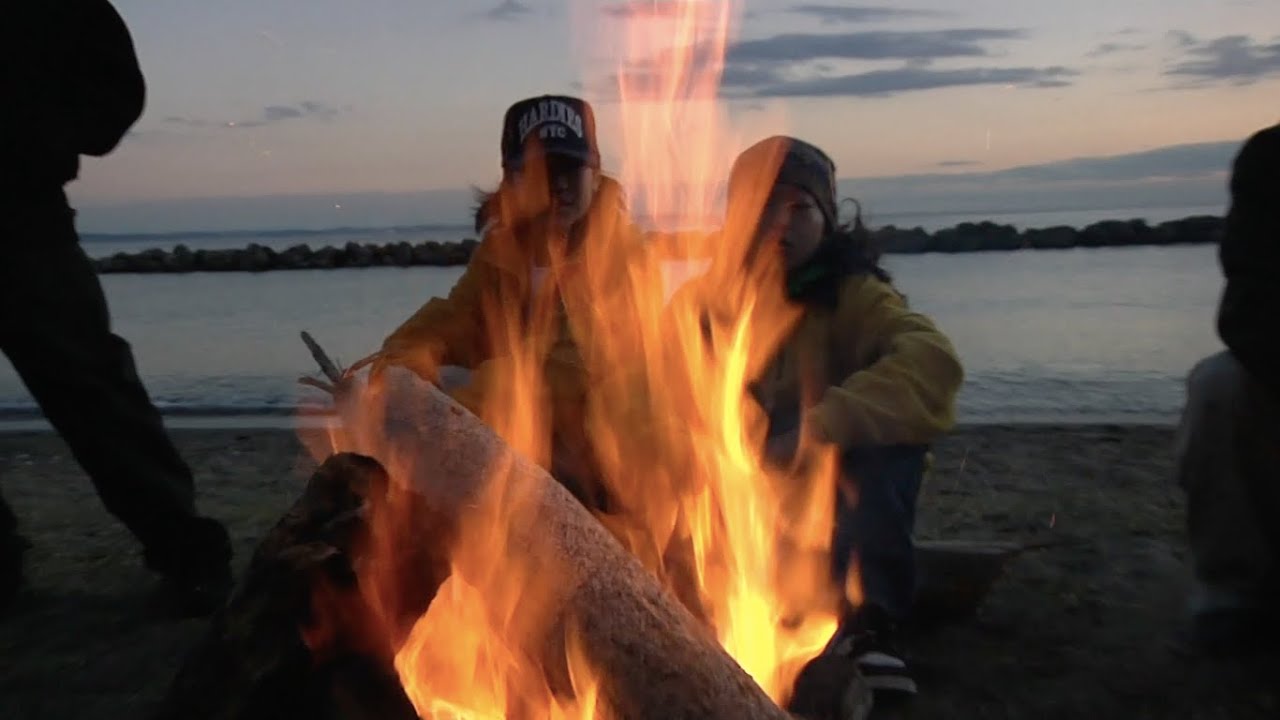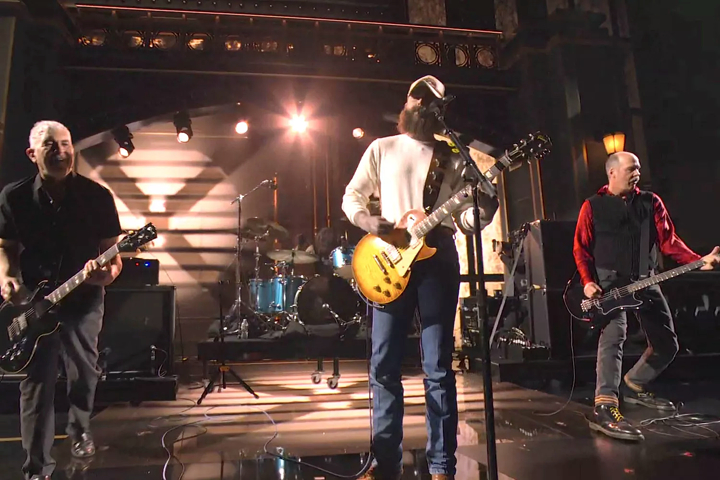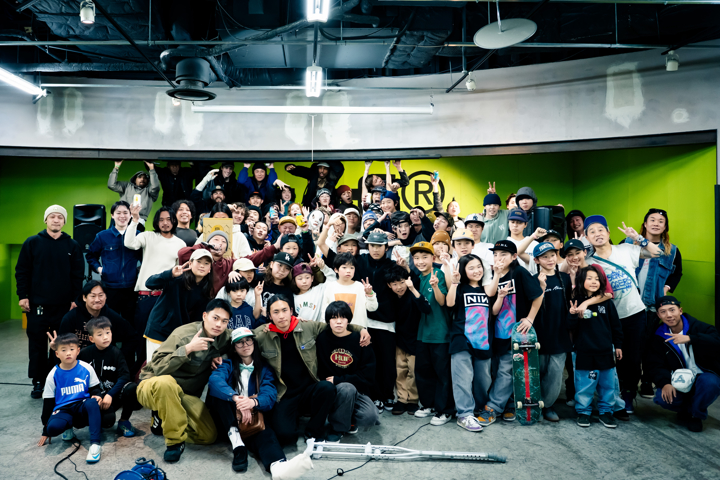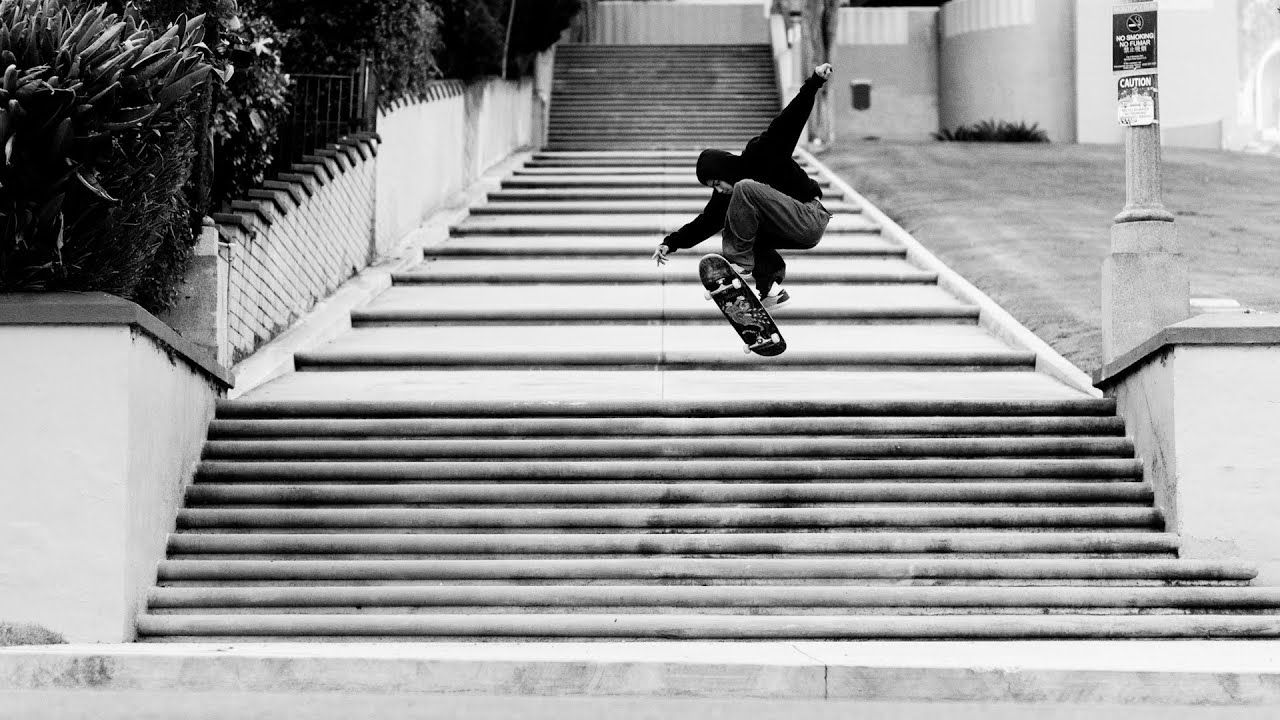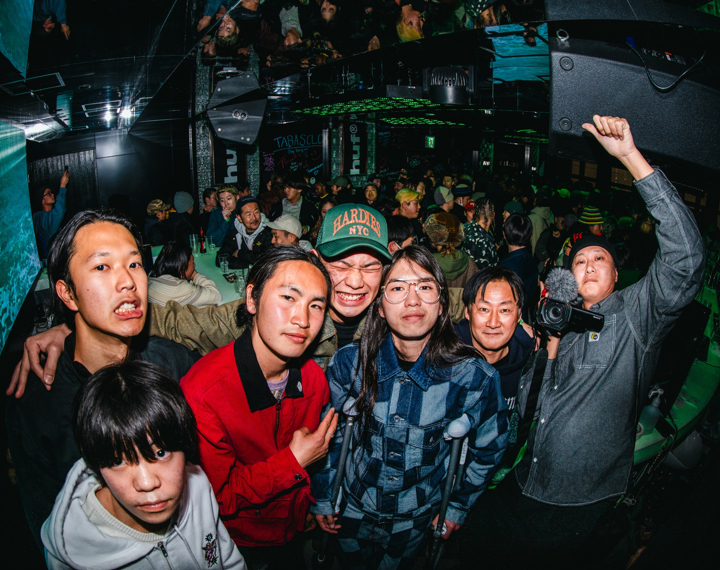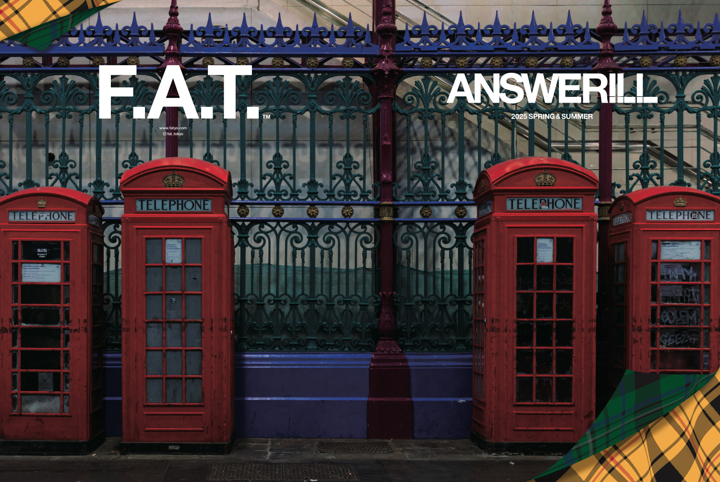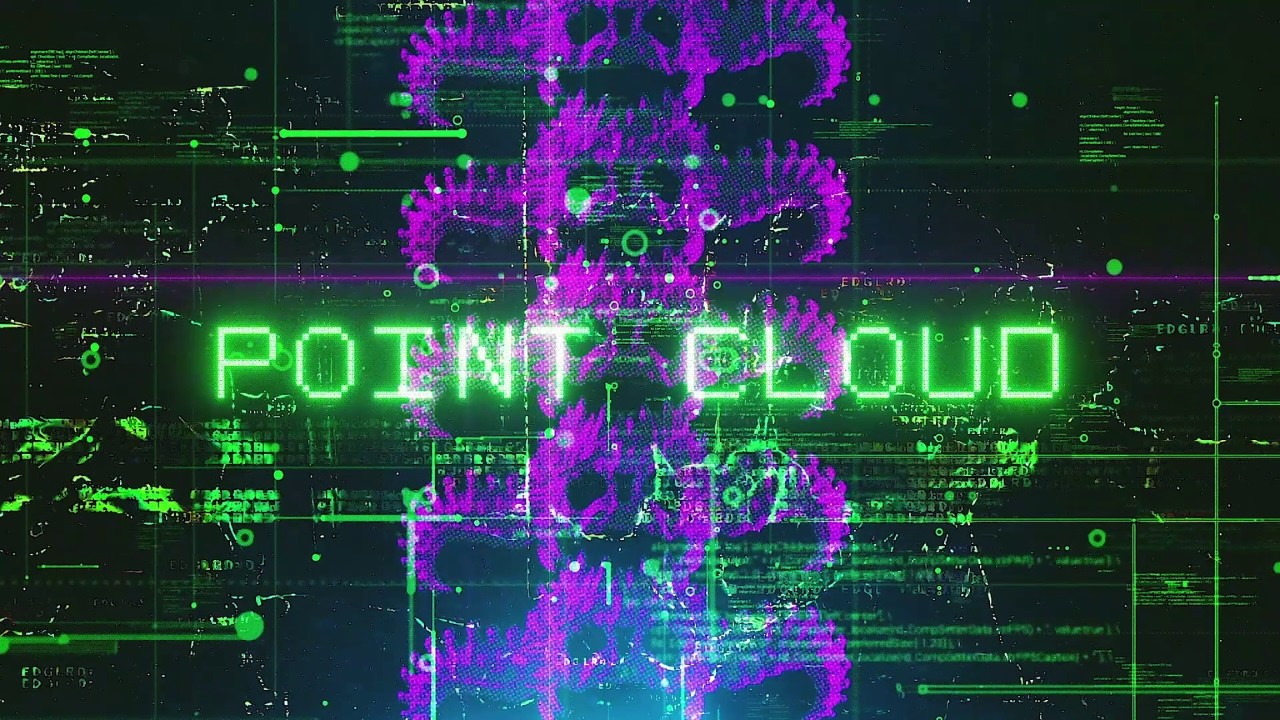Stephen Anri Marshall is known for workin on character and movie animation for PaRappa the Rapper 2. From the late '70s to present day, we take a trip down memory lane and dig up some of his fondest memories growing up as a skater.
──ANRI (ENGLISH)
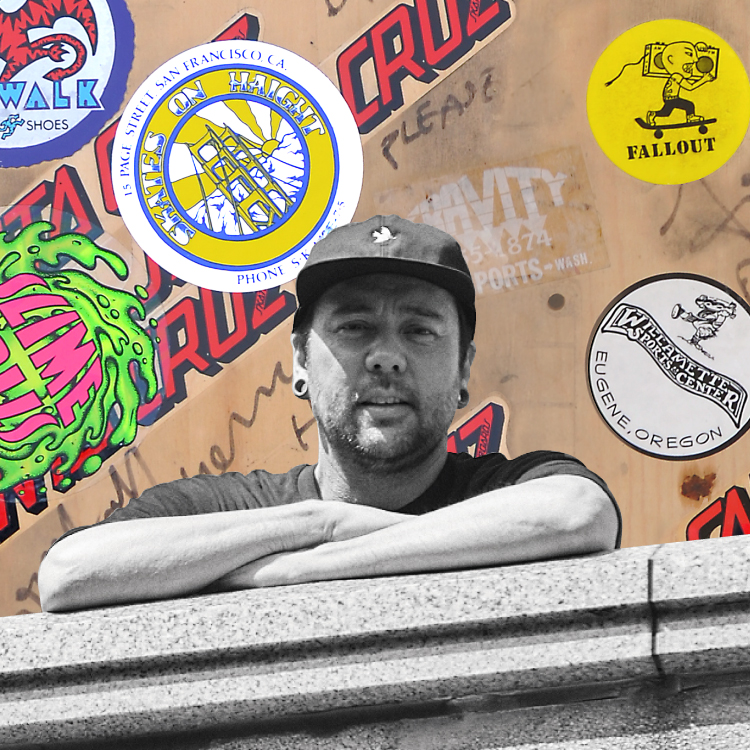
[ JAPANESE / ENGLISH ]
Photo_Junpei Ishikawa (Portrait)
Photos Courtesy of Stephen Anri Marshall
VHSMAG (V): When did you start skating?
Anri (A): In the late '70s, on a plastic banana board from a yard sale. When I was seven or eight, I remember having one. Some kids in the neighborhood all had pretty much a similar thing, so no one really knew about a real pro setup. At the time, we would just push around on our knees. Just butt board through huge puddles and stuff too. It didn't matter. I don't know how bad the bearings got, but we did that for a couple of years at least.
V: Where did you grow up? In California?
A: In Northern California, Eureka.
V: What got you really into skateboarding?
A: Actually I can remember the first time I saw a real skateboard. I was walking down this street and I saw this guy on a skateboard. He was cruising down the sidewalk and hitting these banked driveways and did an early grab air off a big curb cut. I remember that, specifically that moment. I was thinking, "Oh, that's so cool."
V: Do you remember what he was riding?
A: It was a neon green dip Alan "Ollie" Gelfand, Powell Peralta board. This was in '81. I was like, "That's what I want to do. That's so cool." I did newspaper delivery for half a year or so to save money. Then my mom said, "I'll pay the difference." We went down to... it wasn't even a skate shop, it was more like a fishing shop. That's where I remember buying my first skateboard.
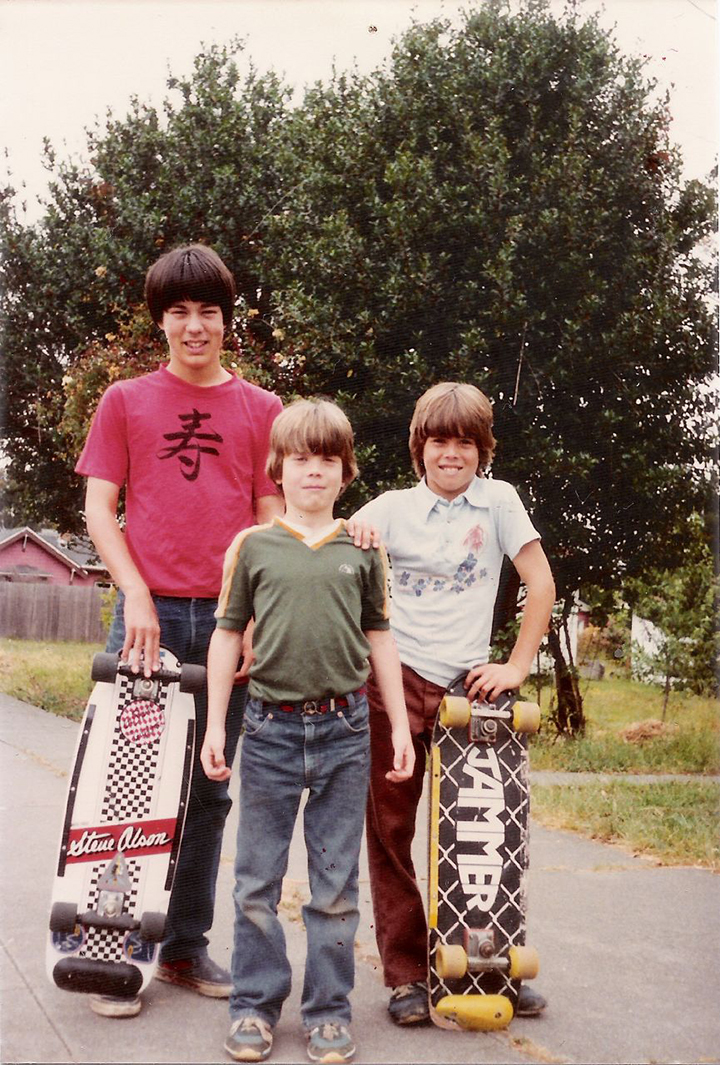
V: Everyone remembers their first board, right?
A: Santa Cruz, Steve Olson was my first board with ACS 651 trucks and City Street wheels. I had the skid plate, the nose bumper, coper, risers. I had that super rough clear grip tape on there.
V: Do you remember your first trick?
A: Probably just carving and going off curbs or something. I don't even remember, it's too long ago. When I learned how to ollie, when I learned how to kickflip or how to ride transition, it all just kind of happened. I was just skating every day. After that, I gave up baseball, soccer, football, break-dancing and stuff like that. I quit all that stuff that was popular back then and just focused 100% on skateboarding.
V: I imagine if you're living in California you have more chance of seeing pros in real life.
A: Not so often, but we went to Santa Cruz in the summer of '84 or '85 and I remember seeing Steve Caballero walking down the beach. Of course we're all skaters so we were like, "Hey, let's go talk to him." An older friend of mine was trying to be cool. He says, "No, no, no, no. You don't want to talk to him. He's not going to talk to you guys. You're too young." He waited for Caballero to kind of get closer to us, and then he just ran up to him and started talking to him without anybody else, so it was really funny. We were like, "What the hell?" That was random but living in Northern California, you rarely saw pros.
V: How about contests?
A: Five friends and I went a street contest in Eugene, Oregon. I think it was in late '86. Thrasher has an article about that contest. It's in the January '87 issue with Jim Thiebaud on the cover. It was raining almost the whole time. We drove up like eight or nine hours from our small town. It wasn't even in Eugene. I think it was a suburb of Eugene called Willamette. They still called it a Eugene contest. A lot of people that I'd see in magazine were there.
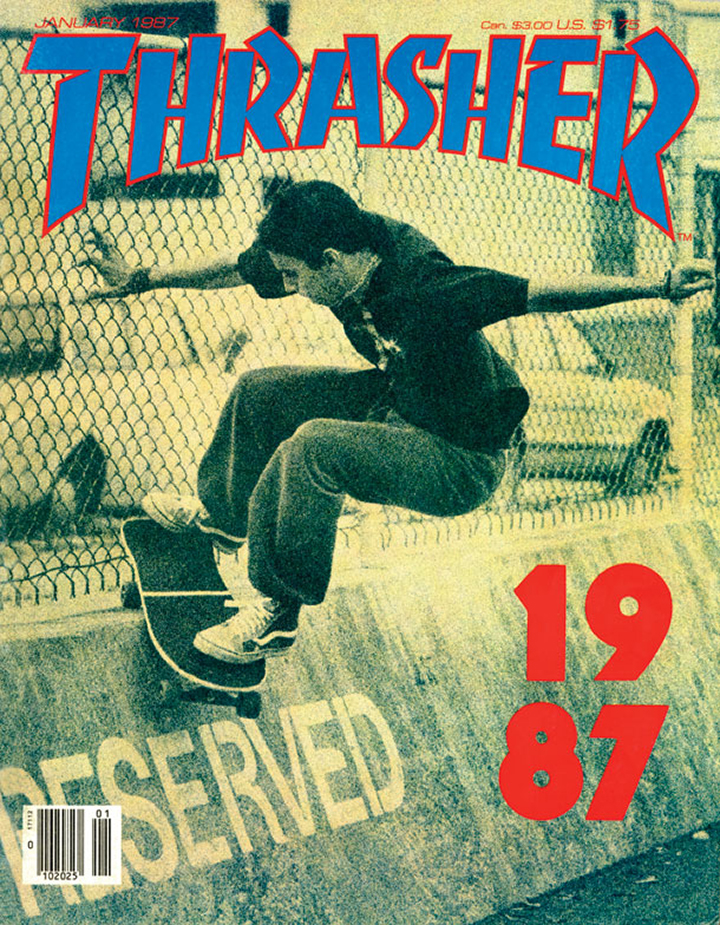
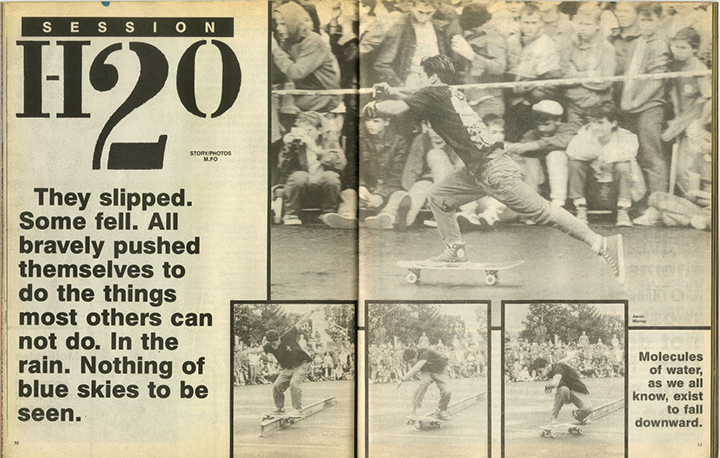
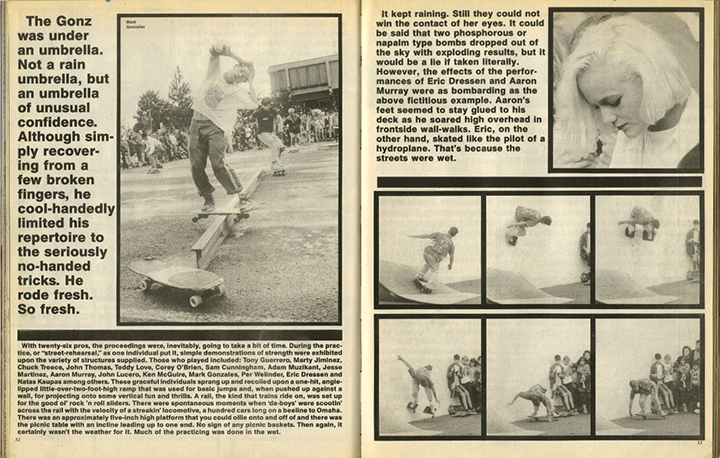
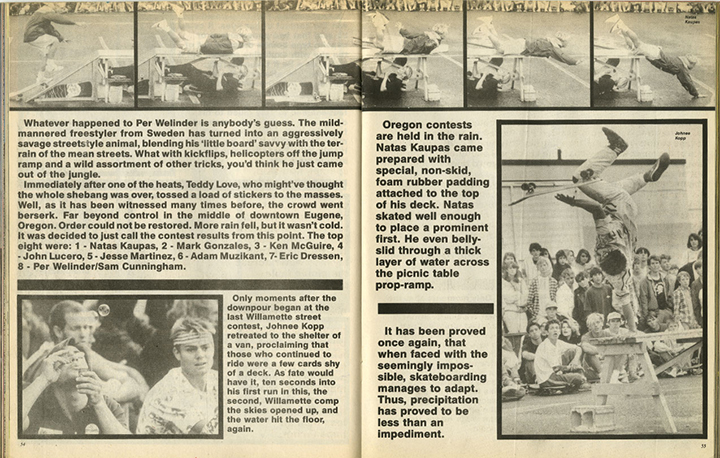
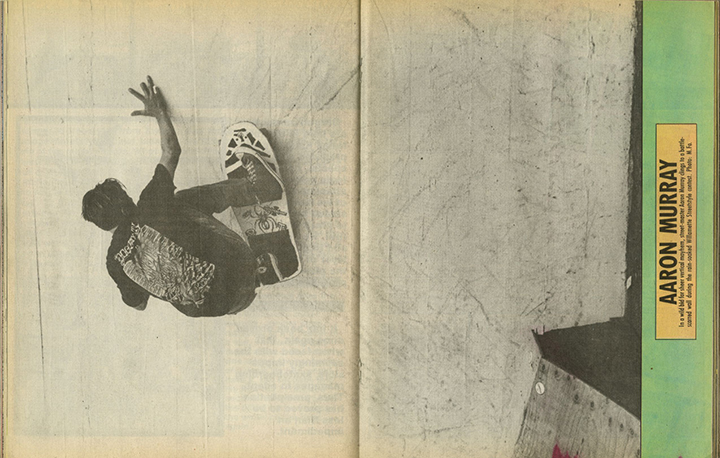
V: That's awesome you got to see all those pros, especially in that era. Have you ever had another experience like that?
A: In the late '80s, one of my best friends went to Santa Barbara for school and he started meeting Powell people and Santa Barbara locals. He became friends with Frankie Hill and the manager of part of the Powell team. The guy was a manager of Rudy Johnson, Guy Mariano, Paulo Diaz and Gabriel Rodriguez. The new kids and right when 'Ban This' had started to make its impact on skating.
V: Did you get to see the Powell kids?
A: I remember my friend called somebody and said, "Hey, these Powell guys, they're coming through." They were probably on a tour and stopped in Eureka. It might have been a Wendy's parking lot or something. Just a place to make a quick pit-stop and get food. Somehow we found out that they were coming through so we went over there to just say hi and just meet them. It was all of 10 or 15 minutes. No skating, just hanging out and chatting. I just remember meeting those guys really briefly in some parking lot in my hometown.
V: You were talking about getting a board from Tony Guerrero, which is Tommy Guerrero's older brother. Was that from the Eugene contest?
A: Yeah. Tony Guerrero was skating in the contest. I heard from Tommy recently saying that his brother was actually pretty sick and almost skipped that contest. He did a couple of runs, but didn't do so well. You could tell at the end he was over it. He threw out his board and it just landed right into my hands. He tossed it directly at me. There was a group of kids, but it didn't go one way or the other. I didn't have to grab it from anyone else. He just said, "Here you go." He was maybe two or three meters away. It was really close. I rode it for a week or so, not even that. I wanted to preserve it just the way it is. I did end up using the trucks and wheels but kept the board just as it is. I was really stoked. He was like, "Yeah, that's my shape." Back then noses started getting a little bit longer, so then they would start chipping really quick from backside wallrides. So he had them shape the nose asymmetrically like that.
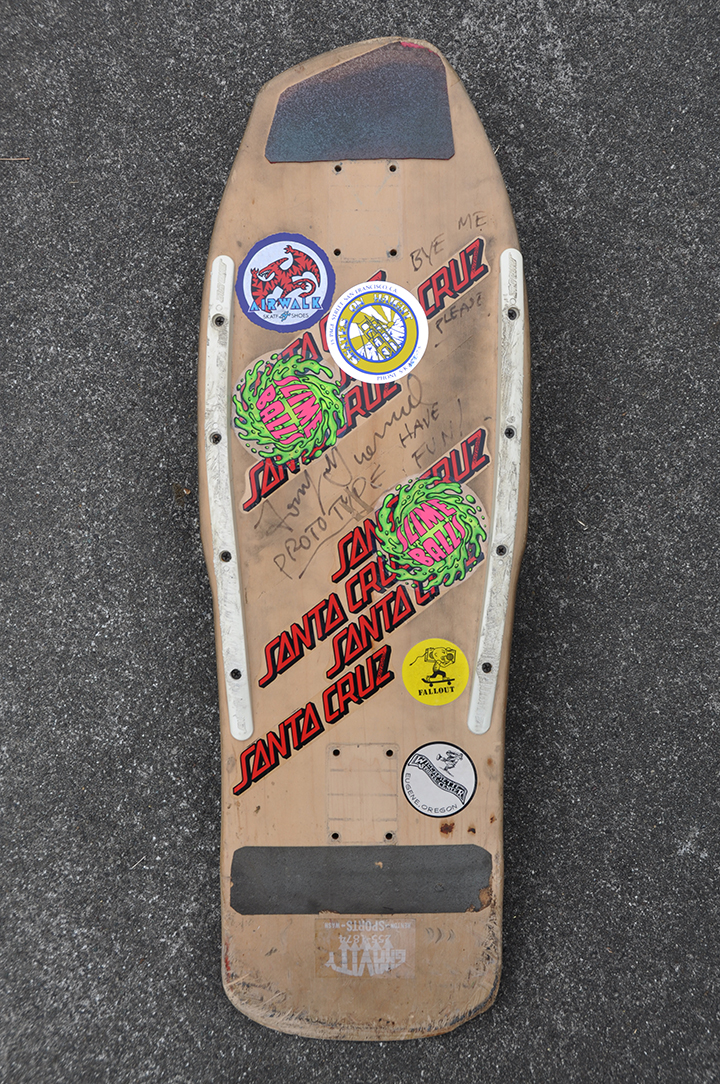
V: You keep pretty much all your boards?
A: Nah. Maybe it's less than half. It's about a third or a quarter, but they're all at my parents' place hopefully.
V: Old boards brings back memories. What are some of your memorable boards?
A: I had multiple Slashers. I also rode various Natas decks because I liked those shapes. Usually I would just pick Santa Cruz or S.M.A. boards. I skated a couple of the Jeff Kendall street board, which is the graffiti one. There was the four roses Eric Dressen. I didn't like the Roskopp decks so much, but I did skate one where it's just the big eye. I had that Jason Jesse mini, with the big Poseidon head on it. I did skate a couple flaming saber Tommy Guerreros. I had a normal one first then the bonite one. I liked that Uncle Wiggly board. That was my second board ever. I think Uncle Wiggly was Tony Magnusson's, one of his first companies before H-Street.
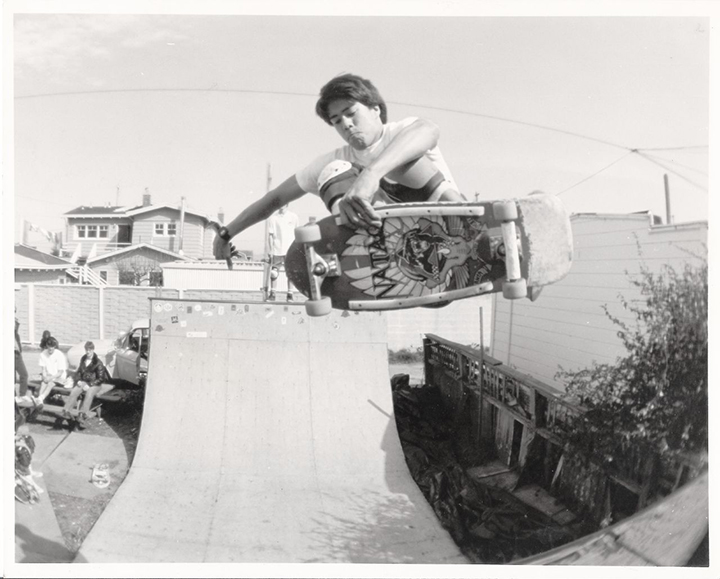
V: I'd never heard about Uncle Wiggly... I started skating in '85 so I was pretty much all about Powell.
A: In the summer of '87, a friend and I traveled to L.A. and went to Alhambra to meet Lance. We met Lance Mountain through his friend Rick. Rick moved up to our hometown in the mid '80s and he would come over to skate my half pipe and miniramp. It just happened that we were down there when he was down there. He said, "Yeah, just call me up or contact me," and he gave us his address. He said, "If you come to my house, then I'll take you up to Lance's," which was just a couple of doors up from his house. He basically grew up on the same street that Lance did, just a couple of houses down. There's a hill. If you look at those old Powell videos or anything, you'd see.
V: Yeah, Same Old had a little video where Bobby Puleo was visiting Lance's old house.
A: Yeah. So we went to Rick's house. Rick said, "Oh yeah, this is the address. Go up. You can just ring the doorbell and he'll be there." I don't think Rick came with us. We rung the doorbell of the house. Yevette, his wife ( maybe then she was his girlfriend ), came to the door. We asked, "Is Lance here?" She looked at us and like, "It's still kind of early," or something and she just closed the door. We kind of waited. It felt like a long time... It must have been five, ten minutes, or maybe not even that long. We were thinking, should we just go back down to Rick's or something and just tell him maybe he's not there, maybe he's doing something else. We were about to leave and then the door opened and it was Lance. He was just standing there in shorts eating a banana. He goes, "Hey, are you guys Rick's friends?" We were like, "Yeah. We just walked up from Rick's house. He said it's cool if we checked out the ramp, or just ask you if we can go into the backyard." He goes, "Oh yeah, no problem. Go ahead." He goes, "Yeah, just walk through the gate here and just walk down the path. The ramp is back there." We all had our boards with us. I can't remember. I don't think we had pads or anything, but we just wanted to go check it out.
V: That's amazing.
A: Yeah. We just got to go down to the backyard, look around. It was so big compared to what we were used to. My half pipe was maybe eight, nine feet tall with a foot of vert. It was like eight foot transition. It was really tight and kind of short at the time. We skated a little bit but I don't think any of us tried to drop in or roll in. It was just too big. We would just kind of work up and kick turn, you know? I had twisted my ankle skating in Santa Ana earlier during that trip, so my ankle was still bad but I could just kind of pump around, kick turn. That was fine. It was just after noon and getting really hot. We were just hanging out. I think around 1:00 or 2:00, his friends, people would start coming over to skate later.
V: Do you remember who showed up?
A: Lance was there of course. I think Mike Smith was there. Chris Borst. Ray Underhill. A couple of other Powell people. It was just a bunch of guys that could skate that thing super well. I remember their boards were huge ramp boards and their wheels were massive 65 or 66 mm. They all had prototype wheels and stuff. We would look at it. There wouldn't be anything printed on it, or there might be just a Powell logo or something but not an actual branded wheel. The ramp wheels at the time were just super big and really narrow. Of course you had to run big risers. I remember Chris Borst's deck had a big hole drilled above the trucks, like where the hardware would mount. He had a big two inch hole. I asked him, "Why did you drill a hole in your board?" He said, "I want to make it lighter," because everything was getting kind of bigger and heavier. He just had parts of his deck drilled out. It was amazing to watch those guys do all their tricks, overhead or right in your face. I think Grant Brittain was there taking photos too.
V: I heard you designed something for Consolidated back in the day.
A: My childhood friend, Moishe Brenman, a guy I've known since nursery, he was the one who moved to Santa Barbara to study art. That's the guy I mentioned earlier who knew one of the managers at Powell. So he graduated and got a job at NHS, in the art department. After a couple of years, he broke off from NHS in '92 with Steve Keenan and Steve "Birdo" Guisinger and they started Consolidated. He did the original design for the cube and the daredevil, all the different early Consolidated designs. He was the first artist there.
V: Okay.
A: Then one day he asked, "Hey, do you want to do a graphic?" Every once in a while he brought it up when we were hanging out. Everything I drew was kind of random or kind of too weird, but I think one time I showed him. "Hey, I drew this brain cube." He was like, "Oh yeah, cool. We can use that." I think he either took a photo of it or he maybe scanned it some how. I can't remember. He incorporated it into that Smart Monkey logo. I still have the t-shirt. It might have ended up on boards eventually. I know there was stickers too.
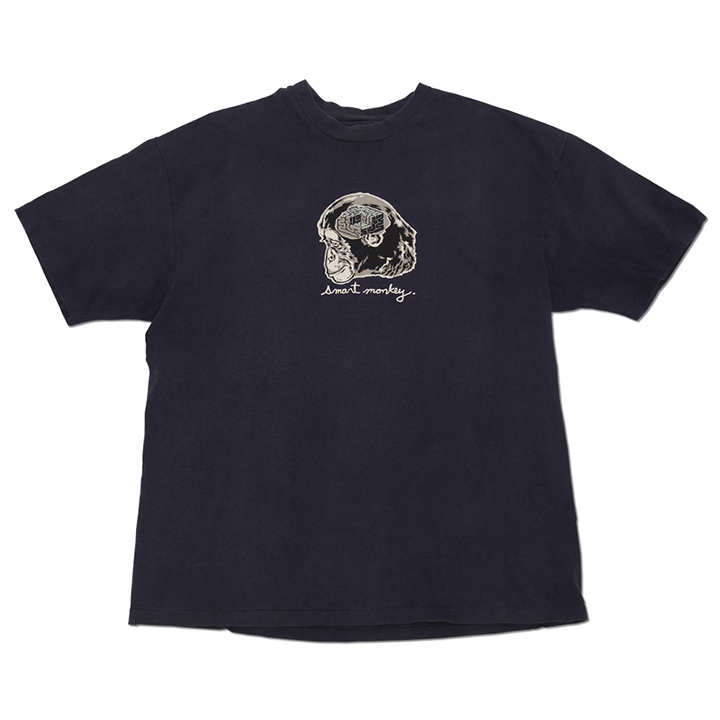
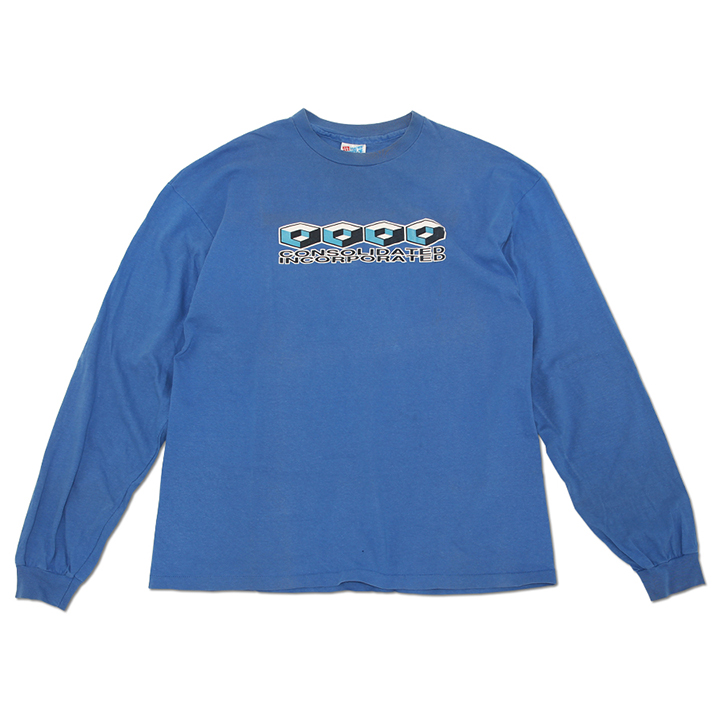
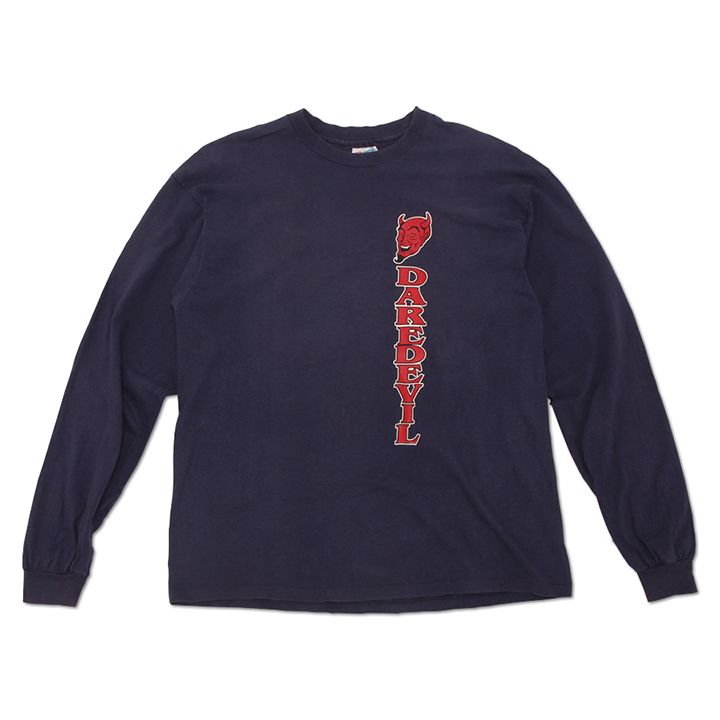
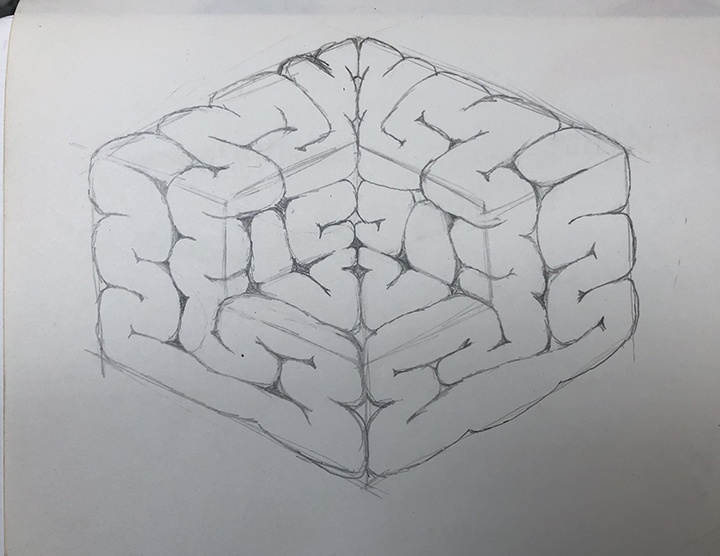
V: That's sick. Were you still in Eureka?
A: No, I was in San Francisco and I was going to school, I was skating on and off. I lived there until 2000.
V: What were you doing in San Francisco?
A: I would do CG and animation work at university, because that's what I had ended up studying. Basically film and animation. I started getting offers and I had a friend who worked at a game studio. I remember going there every day for two weeks to use something called 3D Studio Max, which was a 3D software at the time. I did that over two weeks. They said, "Oh yeah, you're progressing. You could probably do animation for the game," so they actually hired me just off of my demo reel from school and stuff and my past experience with some kind of animation production, and then what I did on the 3D Studio Max over two weeks. That's my first real intro to game animation. From there, it just became more and more game related jobs.
V: What brought you to Japan?
A: I had been coming to Japan once a while to visit family because my mom is Japanese. I came by myself in '98 to look around the first time. That's when I really thought, "Oh, if I study a little bit of Japanese and have enough CG skill, I can maybe find a job in Tokyo." I started searching around, and this is super early internet, so there wasn't a lot of English information online or anywhere on how to find that kind of job. From '98 until 2000, I would searched little by little online or I'd go to Kinokuniya in Japantown and look at CG magazines and look for contact information about different animation and game studios. I could hardly understand Japanese at the time but I could see what they were creating.
V: So you contacted studios from San Francisco?
A: I just sent them my resume, demo reel, cover letter. I contacted them online and said I was interested in applying and I told them what I did. It was fall of 2000 when I came to Japan and did a couple of interviews in Tokyo. The one place that I was most interested in said, "Okay, yeah, we can give you a job. Can you start in two weeks?" I was like, "I think I have to go back to San Francisco and kind of move out, and then I can come back." It was crazy, because I said, "Okay, I can come back in four weeks," because I wasn't really sure. Can I go back and do all that stuff and move back in a month? So I did everything in a month. Maybe five weeks or something.
V: That's crazy... but that lead you to work on PaRappa the Rapper, right?
A: Yeah. I came in on the second one, to do character animation and movie animation. After that I did a couple of commercials using the PaRappa for Dwango. We used a song and made a small music video too. That was my direct connection to Sony, which I ended up working at.
V: Do you currently work at Sony?
A: Yeah, for 16 years. It's the longest job I ever had.
V: So I want to go back to Tony Guerrero story. You met his brother Tommy recently in Tokyo, right?
A: Yeah, pretty recently. Maybe it was three years ago, he had a one man live in Shibuya, like at a live house. I think the night before he had the show, I met him totally by accident in Shinagawa station. I was like, "Hey, you're Tommy Guerrero. Nice to meet you." Tommy's girlfriend was there, she's actually good friends of a friend of mine from university. We had mutual friends, so we started talking. It was just really casual and he was super friendly and nice. I went to his show and we talked a little bit more. I didn't tell him about the board at that time. I had it of course, but I didn't bring up the story at all. Then I posted it sometime after that on Instagram about his board and maybe tagged him or tagged his brother, because his brother also has an Instagram. Then through that, Tony contacted me. He was like, "Oh wow, you have that board." I was like, "Yeah. I remember getting this. It was a huge high point in my life, because I got it at the contest."
V: Nice.
A: We talked about it a bit over Instagram, and he told, "There's only maybe 10 or a dozen ever made." He has no idea where the other ones are. He would always just give them to friends or whatever, and he never went beyond am position for Santa Cruz, so they never actually made a pro model. That was going to be his shape. That was his custom shape. Then more recently, I met Tommy again at his live at Bookmarc and we talked about it. I was like, "You know, I've had it for so long. I think it's time to let it progress into the next phase." I showed Tommy the picture and I told him about how I got it and the whole story, and how there was a little bit of correspondence over Instagram. He was super hyped. He was like, "Yeah, bring it back to San Francisco. Just let me know when you're coming. We can meet at Deluxe."
V: That would be nice...
A: Maybe the next time I go to California, I can take it and go meet them. I'm looking forward to giving it back to those guys and let it move along in its history. I hope Tommy or Tony gets it back and they can hang it and have another story to tell. That part of it, it's going to be super interesting to me, because nothing will change from here unless I let it go back, right? I think that's going to be cool.
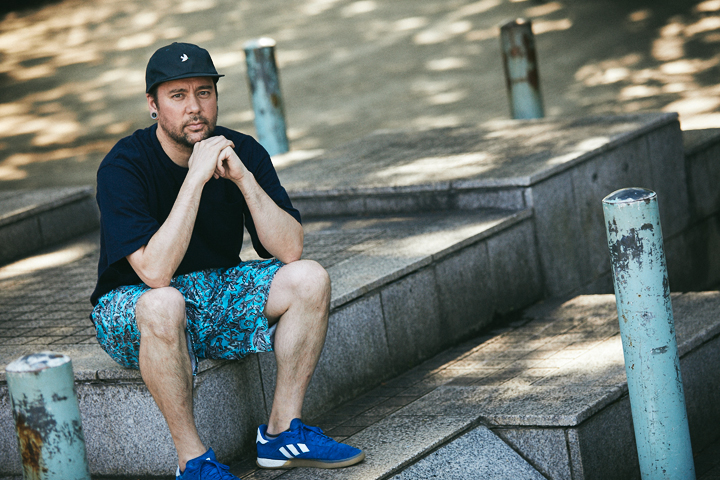
Stephen Anri Marshall
@onezilla
From Eureka California, resides in Tokyo. After spending years as a skater in California, he moved to Tokyo in '00. He currently works for Sony and has been enjoying simple skate life.








